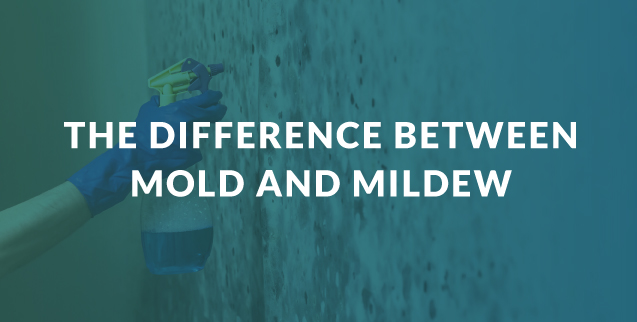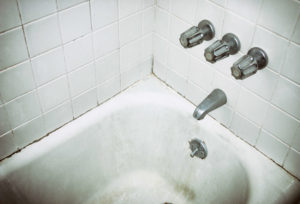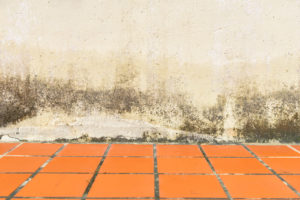
Mold and Mildew May Be Similar, but They are Not Identical
Mold and mildew are often used interchangeably as a generic term for a fungus infestation. However, they are two different types of fungi and cause different problems around your home.
People often confuse the two because of their similarities. Mildew and mold have the same musty odor and are both known to rapidly grow in damp, warm environments. However, mold and mildew each have certain characteristics that make them different.
When it comes to the safety of your home and health, mold and mildew are very different. For example, the two fungi can cause health issues and problems in your home and if left untreated, but a mold infestation is much more severe and requires professional treatment.
 Being able to tell the different types of fungi apart can make a difference in how you approach the fungus problem and find the proper cleaning solution.
Being able to tell the different types of fungi apart can make a difference in how you approach the fungus problem and find the proper cleaning solution.
Similar Looks, Different Health Risks
Mold and mildew can both have a fuzzy texture and can also have a brown, white, or black appearance. However, the mildew most commonly found around your home will look flat because it only lives on the surface of objects.
Mildew does pose minor health risks such as causing coughing, headaches, and acute respiratory problems. While there are several types of molds that cause very similar symptoms, there are also toxic molds that cause significantly more severe problems such as black mold.
Not every black fungus in your home is black mold. Unlike mildew, this toxic mold has a slimy look to it and may even have a blue or green tint. If you smell a foul odor and begin to feel nauseous, fatigued, or have severe breathing or respiratory problems, you may have black mold growing in your home.
Other molds are capable of causing health problems as well. Exposure to toxic molds may cause a range of symptoms from sinus problems to vertigo. If you suspect mold is growing in your home, you should call CLEAR Restoration immediately.
Mildew Does Less Damage to Your Home
Mildew generally does more damage to plants and crops than a person’s home. When mildew grows in your home, it tends to infest fabrics and paper items as well as wet surfaces such as bathroom tiles and shower curtains. Similar to mold, mildew tends to grow in damp areas such as the bathroom, kitchen, and basement. However, mildew do es not damage the structure of your home like a mold infestation does.
es not damage the structure of your home like a mold infestation does.
Mold grows on food, drywall, and even within the walls of your home. The problem with mold is that you cannot always see the infestation happening. While moldy food is easy to spot, finding mold within the wall’s cavities is not as easy. When you see dark, odorous spots seeping through the walls, the mold colonization on the other side of the wall has most likely already spread throughout your entire home.
Since mold tends to grow within the structure of your home, it is important to have the mold removed from your home immediately before it eats away the foundation and deteriorates the framework.
Cleaning Mold Is a Tougher Task
Mildew can generally be removed with cleaning products and a scrub brush. Mildew is a surface fungus, which makes its removal fairly simple. There are also special materials and sprays you can buy to prevent mildew from colonizing. Mold removal, on the other hand, should be left to the professionals.
Removing mold from your home is a much tougher job than removing mildew because its spores can survive in extreme conditions and penetrate beneath the regular cleaning surface. Mold grows in areas that are difficult to access and can be easily spread when disturbed.
If you think mold is growing in your home, call CLEAR Restoration for a mold inspection and removal.



